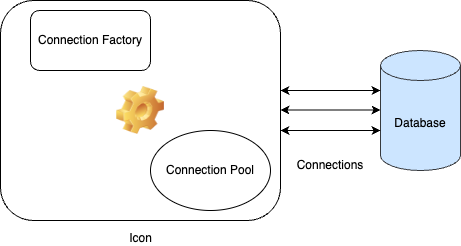SQLAlchemy
SQLAlchemy is split into two main parts.
- SQLAlchemy Core
- SQLAlchemy ORM
The Core contains APIs for writing raw SQL statements while the ORM is for interacting with the database with python code. The ORM itself is written on top of the Core API
The Engine
The Engine is the component that contains all connections to one database. It gives a factory to make a new connection to it and also has a holding space called as a connection pool. Ideally each database should have only one engine that helps the developer connect to it

create_engine method.
from sqlalchemy import create_engine
engine = create_engine("mysql+pymysql://root:root@localhost/database", echo = True)
However this in itself does not connect to the database yet. It will connect only when we actually try to query something. This is called as Lazy initialization
Working with Transactions and DBAPI
The Engine provides us with a Connection object which resembles one connection to the database
We can connect to the database by creating a connection and querying it.
from sqlalchemy import text
connection = engine.connect()
result = connection.execute(text('select "hello world"'))
print(result.all())
Doing it this way just hits the query. We can also do the same in a context manager
with engine.connect() as connection:
result = connection.execute(text('select "hello world"'))
print(result.all())
Doing it this way creates a transaction and runs the query and since we don't have a connection.commit() at the end, the queries get rolled back. Including it will commit it